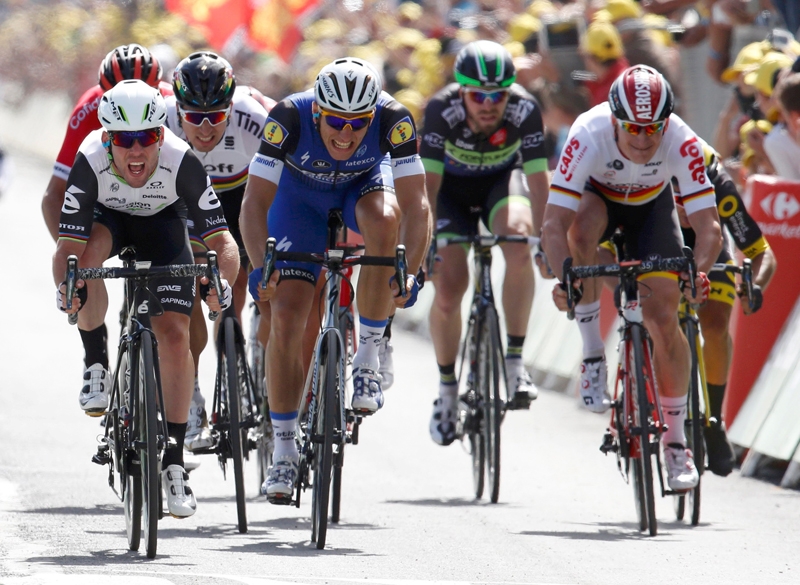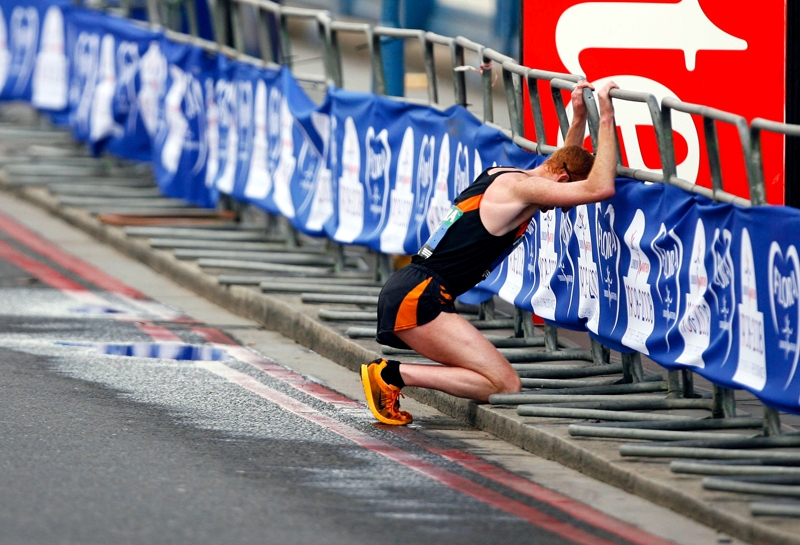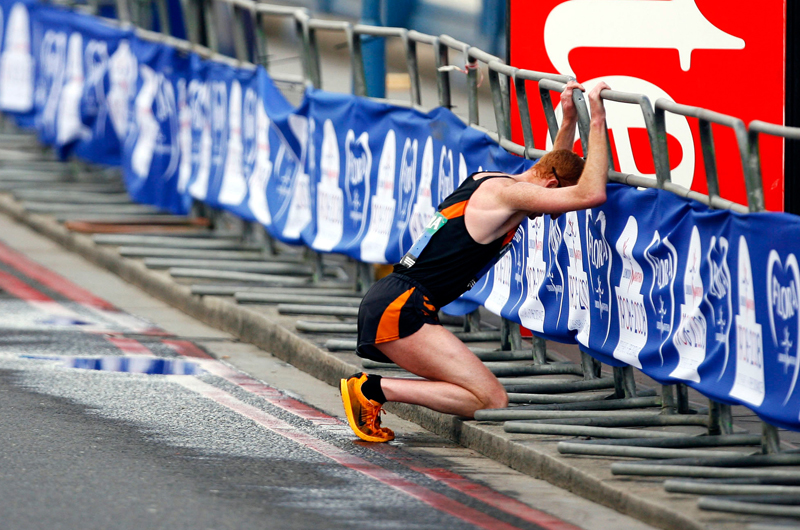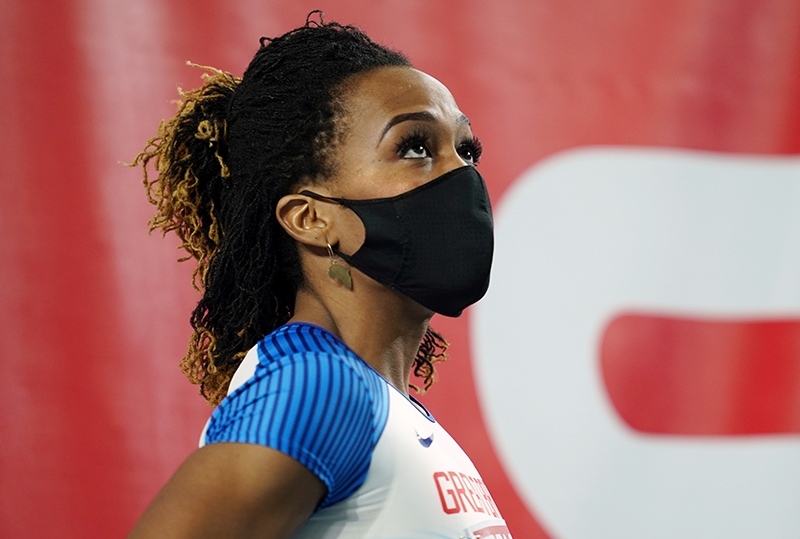You are viewing 1 of your 1 free articles. For unlimited access take a risk-free trial
Burn bright, not out!

Dr Adam Nicholls looks at the latest research on avoiding burnout and provides you with practical strategies to keep you mentally and physically fresh...
According to researchers from the Norwegian University of Science and Technology1 there are five main types of symptoms associated with burnoutInt J Coaching Sci, 8, 25 – 41, 2014. These are as follows: affective symptoms (eg depressed mood), cognitive symptoms (eg feeling helpless), physical symptoms (eg feeling tired or ill), behavioural symptoms (eg reduced performance), and motivational symptoms (eg lacking enthusiasm). When it comes to the causes of burnout, researchers have looked at the role of motivation, coping with adversity, responses to training, and the role of significant othersThe Sport Psychol, 21, 127 – 151, 2007. Their conclusions are summarised in table 1.
Table 1 Causes of Burnout
| Causes of burnout | Tips to avoid | |
|---|---|---|
| Motivation | Athletes who are motivated to perform for enjoyment rather than external rewards are less likely to burnout. Furthermore, athletes who feel in control and enjoy playing their sport are also less likely to burnout. | Focus on what aspects of your sport you enjoy and think about this before every race and training session. |
| Coping with a dversity | Athletes who experienced higher levels of stress were much more susceptible to burning out. Coping had a protective quality; athletes who had better coping resources were less likely to burnout. | Use problemfocused coping strategies (see the section on coping in this article) |
| Responses to training | Athletes who physically recovered from training had less mood disturbances, and were less likely to burnout. | Allow adequate rest periods within your training and competition schedule. |
| Role of significant others | Unrealistic expectations, pressure to perform, and criticism placed on athletes by coaches increased the risk of burnout. Alternatively, supportive coaching behaviours reduced burnout symptoms among athletes. | If you have a coach that places too much pressure on you to perform, consider discussing this with your coach, or changing your coach. |
Measuring burnout
Researchers from East Carolina University3 have developed a questionnaire in order to assess burnoutJ Sport Ex Psych, 23, 281 – 306, 2001. You can complete an adapted version of this questionnaire to assess your own levels of burnout. This is shown in table 2.Table 2 Burnout questionnaire
| Answer these questions relating to how you have been feeling over the last few weeks in your sport | Almost never | Rarely | Sometimes | Frequently | Almost always |
|---|---|---|---|---|---|
| 1. I am not achieving worthwhile things in my sport | 1 | 2 | 3 | 4 | 5 |
| 2. I feel tired due to my training, which results in my having little energy to do non-sport related activities | 1 | 2 | 3 | 4 | 5 |
| 3. The energy and effort I put into sport would be better placed put into other activities | 1 | 2 | 3 | 4 | 5 |
| 4. Participating in my sport is making feel very tired | 1 | 2 | 3 | 4 | 5 |
| 5. I don't seem to be achieving too much in my sport | 1 | 2 | 3 | 4 | 5 |
| 6. I don't care about my sport as much as I did in the past | 1 | 2 | 3 | 4 | 5 |
| 7. My sporting performances don't match my ability | 1 | 2 | 3 | 4 | 5 |
| 8. My sport makes me feel wiped out | 1 | 2 | 3 | 4 | 5 |
| 9. I am not as interested in my sport as I once was | 1 | 2 | 3 | 4 | 5 |
| 10. I am physically shattered from my sport | 1 | 2 | 3 | 4 | 5 |
| 11. I am less bothered about whether I am successful or not in my sport | 1 | 2 | 3 | 4 | 5 |
| 12. I am shattered from the psychological and physiological demands of my sport | 1 | 2 | 3 | 4 | 5 |
| 13. No matter how hard I try, I can't perform as well as I could | 1 | 2 | 3 | 4 | 5 |
| 14. I don't feel successful in my sport | 1 | 2 | 3 | 4 | 5 |
| 15. I have many negative thoughts and feelings towards my sport | 1 | 2 | 3 | 4 | 5 |
Scoring the questionnaire
You can add up the scores for all of the questions to reveal your overall burnout risk.Interpreting your score
You overall score will range from 15 to 75. The higher your overall score, the greater risk you face of becoming burnt out or the more likely it is you are already burnt out. If you scored between:15 and 34 - You are not in danger of burning out as consequence of your sport.
35 and 54 - You are exhibiting signs of burning out, which means that you will benefit from engaging in some of the strategies recommended in this article.
55 and 75 - You are already displaying symptoms of burnout and are at risk of burning out. It is imperative that you make adjustments to your training schedule and allow more time to recover from training - in addition to deploying effective coping strategies.
CASE STUDY: Holly Hight - Burnt out from running
Holly Hight was an avid club runner, who loved running and competing, spending most weekends competing in one race or another. However, she fell out of love with running. She did not compete for over a year, because she felt ‘spent’, ‘burned out’, and generally ruined. She began taking up new hobbies such as gardening, going for walks in the countryside, and spending more time with her family. Holly had fallen out of love with running, and was not sure that she would ever run again, because she had no desire to race or train. As Holly described “I was convinced as the weeks and months went by that I would never get back into it.”Rather than getting up early to go training, Holly was enjoying lying on a morning, and felt that her body was still recovering from her last race in which she completed her best performance ever. Holly had run three legs of 6 miles in a relay race, covering the final 6.04 miles in an impressive time of 33.09 seconds for the downhill section of the relay. However, her previous training regime had taken its toll, leaving Holly in a burnt out state.
Holly liked her new mindset and lifestyle, which no longer involved training or competing. She enjoyed the feelings of the breeze in her hair and the sun on her face as she walked – something she did not experience whilst running. Previously, her life revolved around training and her “must do” attitude, in which she felt she always had to go out training regardless of the weather or if it was dark outside. She enjoyed not having to do this any longer.

Holly used to spend an hour running every day, but now that she had stopped running, she felt she had so much more time and often wondered why she previously dedicated so much of her life to running. She then realised that although she only spent an hour per day running, Holly would spend most of the day thinking about running. It consumed her life – what food she should eat in preparation for her next run, where she would run to, what her goals were for the next training session, what course she would run.
She enjoyed not running. She enjoyed the new things in her life more than running. People would ask Holly when her next race was, but she had no plans to resume running. One day after a break of over 10 months, Holly had gone for another walk. Whilst walking home, with a mile or so to go, she decided she would jog home. She got the desire back. As she explained “There was something I hadn’t felt in a very long time - a glimmer, a familiar longing to experience the feeling I got when I ran, the hard pump in my chest, the feeling of work, of breathing hard. I loved it, missed it, and wanted it back.” This was the start of Holly’s road back to running. She started running one mile, then two miles, then three miles, gradually building up the distances. Holly had fallen in love with running again.
Holly was demonstrating signs of exhaustion and devaluation – key components of burnout. She used some excellent strategies to overcome these aspects of burnout. Firstly, she decided to take an indefinite break from her sport (do not feel afraid to do this yourself, if you think you are suffering from burnout). Holly did not put any pressure on herself to return to running. She waited until she felt ready then when she started running again, she progressed very slowly, building up the miles week upon week.
Figure 3: Summary of strategies to prevent and treat burnout

Prevention and treatment strategies
If you scored over 35 on the burnout questionnaire above, there are a number of things you can do to reduce your symptoms of burnout. Although researchers have not explicitly explored the effects of interventions to reduce or treat burnout among athletes, the findings from recent research can be applied to help you prevent burnout occurring or treat burnout if it has occurred (see figure 3 for a summary).*Skill development - Researchers from the University of California have suggested that athletes - particularly younger athletes - should focus more on developing skills within their sport, as opposed to spending excessive amounts of time training, which could increase the chances of exhaustionBrit J Sports Med, 48, 287 – 288, 2014. Indeed, these authors called for more emphasis to be placed on skill development, with less emphasis on winning and competition. If you are a runner, you could spend time with a running coach working on your form and technique, for example.
*Hope - Researchers from the Karlstad University reported that athletes who felt more hopeful and optimistic reported far fewer burnout symptomsPsych Sport Exerc, 14, 640 – 649, 2013. As such, it’s likely that you can reduce the likelihood of burning out (or treat burnout) by employing strategies to increase feelings of hope and optimism. These include:
- Setting achievable goals that push you, but that are still readily attainable.
- Visualising how you are going to achieve your goals – ie seeing yourself doing the things you need to do to achieve your goals (eg executing a specific strategy).
- Engaging in positive self-talk. When you have any negative thoughts, change these to positive thoughts. For example, the negative thought “This is going to be a tough race” could be changed into “I have worked hard in training, I have prepared well to enable me to perform well.”
- Focussing on what you can gain from stressful situations, rather than what could go wrong.
*Decision making - Researchers from East Carolina University have argued that athletes should have more say in decisions that are made regarding practice sessions and competitions. If, for example, you are a coached athlete and feel that you have little say in what you do when training or competing (eg deciding which competitions you enter), it is important that you speak to your coach and ask for more input into what your training schedule consists of, and the competitions that you will be participating in.
Table 3 Problem focused coping strategies recommended
| Strategy | Example |
|---|---|
| Increase concentration | Focus on what you want to achieve and block out distractions by thinking about your own performance and not those of other competitors, or other distractions (eg spectators). Use keywords that are task relevant. For example, a runner might say “leg†and “drive†when running up a hill. |
| Logical analysis | Step back from the situation and work out what you need to do to solve the stressor. In terms of sport, analyse your last performance in your mind to work out what went wrong and form a plan to solve any errors or mistakes. |
| Relaxation | Engage in deep-breathing exercises when you are nervous or relax your body physically by stretching. |
| Seeking support | Speak to people. If you are unsure why problems are occurring (eg recurring injury problems, which could be due to your running technique or overtraining) speak to people that are close by and knowledgeable. Before approaching them, consider the best person you could speak to in relation to your problem. If you have a technical issue, speak to someone who could help you with that, whereas if you have an emotional problem, speak to someone who you think will be caring. |
As mentioned above, some coping strategies are unsuccessful and actually associated with burnout. Researchers from the University of British Columbia reported that athletes who used disengagement-oriented strategies (strategies associated with closing down attempts to achieve their goals) were more likely to experience burnoutJ Sport Exerc Psych, 35, 270 – 280, 2013. Additionally researchers have found that ‘avoidant’ strategies are associated with burnout. As such, it is important to avoid using these strategies (see table 3).
Table 4 disengagement oriented and avoidance coping strategies not recommended
| Strategy | Example |
| Venting of unpleasant emotions | This refers to athletes shouting or screaming when experiencing stressful situations. These athletes are not in control of their emotions – their emotions are controlling them. Furthermore, engaging in this type of coping strategy means the athlete is neither attempting to take control of his/her her emotions nor the situation. This type of strategy can lead to added frustration. |
| Resignation | Resignation involves the athlete accepting that they will not be able to achieve what he or she wanted to achieve. It is akin to accepting defeat. |
| Behavioural avoidance | Behavioural avoidance involves walking away from a person or situation. |
Summary
Burnout is a serious condition, which is associated with a variety of unpleasant symptoms such as feeling ill, depressive symptoms, feeling helpless, and reduced sport performance. You can reduce your risk of burning out by ensuring you take adequate rest between training and competition and focussing on the aspects of your sport you enjoy. If burnout occurs, you can decrease its impact by changing your training regime to focus more on skill development, increasing feelings of hope and optimism, and deploying problem-focused coping strategies. If these strategies fail, time completely away from training and sport can also be very productive and allow you time to get your desire back.Related Files
Newsletter Sign Up
Testimonials
Dr. Alexandra Fandetti-Robin, Back & Body Chiropractic
Elspeth Cowell MSCh DpodM SRCh HCPC reg
William Hunter, Nuffield Health
Newsletter Sign Up
Coaches Testimonials
Dr. Alexandra Fandetti-Robin, Back & Body Chiropractic
Elspeth Cowell MSCh DpodM SRCh HCPC reg
William Hunter, Nuffield Health
Keep up with latest sports science research and apply it to maximize performance
Today you have the chance to join a group of athletes, and sports coaches/trainers who all have something special in common...
They use the latest research to improve performance for themselves and their clients - both athletes and sports teams - with help from global specialists in the fields of sports science, sports medicine and sports psychology.
They do this by reading Sports Performance Bulletin, an easy-to-digest but serious-minded journal dedicated to high performance sports. SPB offers a wealth of information and insight into the latest research, in an easily-accessible and understood format, along with a wealth of practical recommendations.
*includes 3 coaching manuals
Get Inspired
All the latest techniques and approaches
Sports Performance Bulletin helps dedicated endurance athletes improve their performance. Sense-checking the latest sports science research, and sourcing evidence and case studies to support findings, Sports Performance Bulletin turns proven insights into easily digestible practical advice. Supporting athletes, coaches and professionals who wish to ensure their guidance and programmes are kept right up to date and based on credible science.












